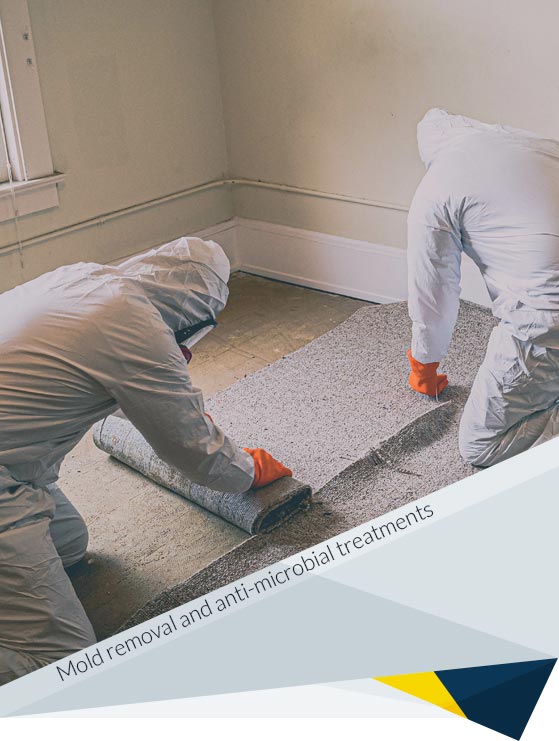
Mold, especially black mold, has been a big topic of news discussions in the last few years. Although the hype has died down somewhat, mold is still an important issue when you consider its potential to damage human health and property. Simply taking steps to kill the mold is not the answer. Mold needs to be physically removed, including any structural components deemed unsalvageable due to the mold's presence, the area treated with an antimicrobial, and the affected areas dried back to acceptable levels of moisture. All this needs to be done before any reconstruction or repairs.
If a mold remediation company tells you that it can totally eliminate the presence of mold in your home, beware! Unless you live in a bubble, the presence of mold can never be totally eliminated. That being said, FDP Mold Remediation certified removal technicians understand mold's critical nature, what the mold requires to grow, and the procedures to follow to return your home to a safe, acceptable mold level.
Mold remediation includes mold inspection & testing, containment, the removal of mold and unsalvageable materials, an application of an antimicrobial, and mold cleaning, with the final step being clearance testing to certify that the problem has been eliminated. In step 1 the location of the mold and its type has been identified. In step 2 the problem has been documented and a plan of removal has been developed. Step 3 involved the sealing off affected areas by setting up containment to stop any potential cross-contamination of unaffected areas. Now the real work of removal is ready to begin.

Many times, when the situation calls for it, our FDP Mold Remediation technicians' first step in the physical removal process is to vacuum up any visible mold with a HEPA vacuum. This helps to eliminate a vast amount of the mold spores so that they don't become airborne. A HEPA vacuum works by pushing air through a dense mesh filter and thereby trapping harmful spores inside the vacuum. Non-HEPA vacuums, with inefficient filters, can easily release “vacuumed” spores back into the air and add to the risk of spreading the mold.
Unfortunately, as well as removing the mold, the remediation process usually requires that some affected, non-structural materials may also need to be removed and discarded. These materials can include items such as carpeting, carpet cushion, tack strip, drywall, vinyl flooring, baseboards, and insulation. In some cases 2x4s, underlayment, and plywood may also be damaged to the extent that they necessitate removal. Here's why a mold remediation professional may recommend removal of these items:
Carpeting:Carpeting can be at high risk for mold growth. Carpet is constructed in at least two layers, a primary backing and a secondary backing. Both backings contain latex, an organic compound that can act as a food source for mold. The mold may not be visible, but it could grow on the carpet backing. The cost of replacement and risk of not being able to completely remove the mold outweigh the cost of cleaning.
Drywall:Drywall consists of a layer of gypsum with paper backing on both sides. Mold has roots, or hyphae, that will grow through the gypsum and affect the paper backing on either side. The side facing the room may be fine but the backside can be covered with mold. Drywall should always be removed and replaced after drying has been completed.
Vinyl Flooring: Many vinyl-flooring products have a paper backing. Mold loves paper. Mold damage on the backing usually becomes noticeable as staining and it may take a while to become evident. To be safe vinyl flooring with a paper backing should be removed when mold is present.
Tack Strip: Carpet tack is an inexpensive product and is quite susceptible to mold growth. Replacement is easier and less expensive to just replace.
Baseboards and trim: Baseboards and trim are nailed on top of drywall. This allows the drywall retain moisture much longer than what is safe to stop mold growth. There is also a lack of light, that when combined with moisture, is another condition that promotes mold growth.
Insulation: Insulation can be made of glass fiber (commonly containing between 40% to 60% glass) backed with paper or cellulose. Once again the paper backing can be a problem, and cellulose is nature's most common organic compound. Mold requires an organic compound as a food source.
2x4s and wooden structural materials: Once materials like these lose their structural integrity, they require removal and replacement. This is something that is done only after strong consideration and only under extreme conditions. This is one of those places where professional expertise comes into play.
Once any unsalvageable materials are removed and disposed of, the real work of mold remediation begins. Impacted materials are scrubbed and cleaned to remove the presence of all mold and mold spores. This is the critical step. Remediation contractors will remove any remaining mold with wire brushes, sanding, or with more intense methods such as dry ice or media blasting. No matter which way (or combination) is used, the mold needs be removed in its entirety.
Many times during cleaning a liquid-based, anti-microbial product will be used to wipe down remaining structural materials. A two or three step process is used to achieve the cleaning, with HEPA vacuuming and material drying in between the stages. A dehumidifier and an air scrubber remain in operation inside the containment throughout the entire cleaning process. Upon completion of the cleaning, an additional anti-microbial treatment is applied to ensure that the mold is completely removed and will not return.
Upon completion of cleaning clearance testing is advised. This is a mold inspection performed after the project's completion but before air scrubbing is stopped and containment is taken down. A successful clearance test includes:
Once the results of this testing are confirmed as acceptable, containment can be taken down and remediation equipment removed. Reconstruction and replacement will be ready to begin.
Professional mold remediation companies, like FDP Mold Remediation, have the expertise and knowledge to deal with mold in a way that is safe for you and your family. Our greatest advantage is that we also have all the necessary tools and equipment to detect and remove mold effectively. It takes proper removal to prevent the mold from returning.
Many people feel that they are quite capable of eliminating a mold problem in their home. They think that a quick search on the Internet will provide them will all of the knowledge needed to be successful. Maybe they'll even get lucky and get the job done. Then again, what they feel is good advice could be dangerous advice.
Like using chlorine bleach to kill mold. Experts advise that using bleach to treat, clean, or kill mold can present many health risks. Household bleach is not necessarily toxic, but prolonged exposure to bleach can be very harmful to humans. The off gassing of chlorine bleach produces a byproduct called dioxin, which is recognized as a cancer-causing compound. The chlorine contained in the bleach (only about 4-6% of the total, the rest is water) is scientifically designed NOT to penetrate a surface. As the chlorine dries up, the water continues to be absorbed into the mold's roots and may actually help the mold to thrive.
Although bleach will kill mold, dead mold is allergenic and may cause allergic reactions and other health effects in some individuals. So it is not enough to simply kill the mold. It must also be removed.
Indoor mold can be a problem for your home structurally and for your health. Ignoring mold growth can:
It is always best to deal with any mold problem as soon as you see it. If you think you have a mold issue, it is best to call FDP Mold Remediation. Our technicians have the knowledge and expertise to help you achieve a healthier and much more inviting home environment. They will be able to determine the extent of the damage and react quickly to rid your home of any and all mold contamination.



